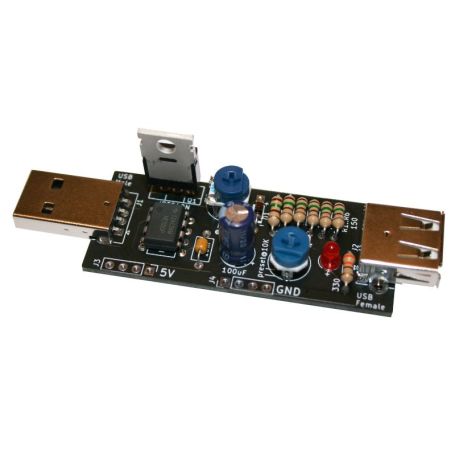Powerbank Foolish - Prevent Powerbank from shutdown
Prevent the Smart PowerBank shutdown
- Available in Kit
- Pulsing load (200mA)
- High pulse : 134ms to 1.34s (670ms recommanded)
- Pause : 3.35s to 33.50s (22s recommanded)
Payments are secured by LyraCollect, a French payment collection company.
It is possible to delivered to your home, to a pick-up point or picked up by appointment at MCHobby
We prepare, pack and ship your orders with great respect and care.
Prevent the PowerBank to get in sleeping mode by simulating intermittent load
A power bank is great for powering an Arduino project, Raspberry-Pi Zero, MicroPython, etc. However, powerbanks have an annoying tendency to think they are smarter than us ... especially if there is not enough current to consume on the PowerBank (it turns off).
The Smart PowerBanks monitor the current consumption on the USB ports and put the PowerBank in standby mode when the consumption is insufficient. It is more and more difficult to find a simple PowerBank without such smart functionality. Indeed, a microcontroller project consumes almost nothing and the PowerBank goes to sleep quite quickly.
On the other hand, the way it work is based on average consumption. So no need for a permanently connected heating resistor and unnecessary waste of energy. A clever approach is to simulate an average consumption using resistors and a Timer activating load resistors from time to time (Great idea from Hackable!). .
This card is equipped with two potentiometers allowing to adjust the high pulse time (RV2) and the pause time (RV1) between two pulses.
The load resistors (6 x 150 Ohms) allow to simulate a spike current of 200mA. And with the initial configuration RV2 = 10KOhms and RV1 = 300KOhms, this project simulates a 670ms pulse every 22 seconds ... but this configuration can be tuned with other pulse & pause time.
What else:
- The LED present on the assembly gives an idea of the pulse time vs pause time..
- The USB-A plug at the other end allows you to plug in your project (useful if the PowerBank has only one USB connection available).
- Two 5V and GND power rails are available to directly connect your project (without going through an USB-A output connector).
Tutorial
- Assemble and use the PowerBank Foolish (Wiki MC Hobby, French)
With lot of images.









